 2005 Hyundai Tucson I Dimensions, Size & Specs
2005 Hyundai Tucson I Dimensions, Size & SpecsMeasurements of the 2005 Hyundai Tucson I, engineered for optimal performance and comfort
| Dimensions | |
|---|---|
| Length: | 4325 mm170.3 in14.2 ft |
| Width: | 1795-1830 mm70.7-72.0 in5.9-6.0 ft |
| Height: | 1680-1730 mm66.1-68.1 in5.5-5.7 ft |
| Trunk Capacity: | 480-644 liter17.0-22.7 cu ft |
| Trunk Capacity (Max): | 1856 liter65.5 cu ft |
| Weight Specifications | |
| Curb Weight: | 1470-1610 kg3241-3549 lbs |
| Maximal permitted Weight: | 2120-2210 kg4674-4872 lbs |
| Tire Specifications | |
| Rims Sizes: | 16-inch rims:
|
| Tire Sizes: |
|
The Hyundai Tucson I, produced from 2004 to 2010 and introduced for the 2005 model year, represents Hyundai's entry into the compact SUV market. This first-generation Tucson offers a balanced mix of practicality, comfort, and urban-friendly dimensions. Measuring 4325 mm (170.3 inches) in length, the Tucson I fits well within the compact SUV segment, providing easy maneuverability for city driving without compromising interior space.
With a width ranging from 1795 mm to 1830 mm (70.7 to 72.0 inches), and a height between 1680 mm and 1730 mm (66.1 to 68.1 inches), the Tucson offers a commanding driving position characteristic of SUVs, while maintaining a manageable footprint. The curb weight varies between 1470 and 1610 kg (3241 to 3548 lbs), reflecting differences in trim levels and equipment, and the vehicle's maximum permissible weight falls between 2120 and 2210 kg (4672 to 4872 lbs), ensuring solid load-carrying capabilities.
Luggage capacity is a notable strength of the Tucson I, with a standard cargo volume of 480 to 644 liters (16.9 to 22.7 cubic feet), which can significantly expand to 1856 liters (65.5 cubic feet) when the rear seats are folded flat. This versatility makes it practical for both everyday errands and longer trips requiring larger cargo space.
The Tucson rides on 16-inch rims, sized 6.5J x 16, fitted typically with 235/60 R16 or 215/65 R16 tires, offering a blend of comfort and grip suitable for both urban roads and light off-road conditions. Overall, the Hyundai Tucson I is a well-rounded SUV that appeals to drivers seeking a reliable and moderately sized vehicle with versatile cargo options and solid performance in a compact package.
Discover the standout features that make the 2005 Hyundai Tucson I a leader in its class
Have a question? Please check our knowledgebase first.
The Hyundai Tucson I, produced from 2004 to 2010 with the 2005 model year as a reference, has a length of 4325 mm (approximately 170.3 inches). Its width varies between 1795 mm and 1830 mm (about 70.7 to 72.0 inches), depending on the specific trim or equipment. The height ranges from 1680 mm to 1730 mm (approximately 66.1 to 68.1 inches). These dimensions position the Tucson I as a compact SUV suitable for urban and suburban driving, offering a balanced footprint for maneuverability and interior space.
The curb weight of the Hyundai Tucson I (2005) varies from 1470 kg to 1610 kg (3241 to 3550 pounds), depending on the specific model, trim level, and optional equipment installed. The maximum permissible or gross weight ranges between 2120 kg and 2210 kg (4677 to 4872 pounds). This weight range reflects the vehicle’s capability to carry passengers, cargo, and additional accessories while maintaining safe handling and performance consistent with compact SUVs of its era.
The Hyundai Tucson I offers a practical luggage capacity suitable for various passenger and cargo needs. With the rear seats in their standard upright position, the luggage compartment provides between 480 liters and 644 liters (16.9 to 22.7 cubic feet) of cargo space. When the rear seats are folded down, the space dramatically increases to a maximum of 1856 liters (65.5 cubic feet). This sizeable cargo area facilitates transporting larger items and enhances the vehicle’s versatility as a compact SUV.
The Hyundai Tucson I’s exterior dimensions make it well-suited to fit into a standard residential garage, which generally accommodates vehicles up to approximately 2.4 to 2.7 meters (7.9 to 8.9 feet) in height and around 2.4 meters (7.9 feet) in width or more. Since the Tucson I measures between 1680 mm to 1730 mm (66.1 to 68.1 inches) in height and 1795 mm to 1830 mm (70.7 to 72.0 inches) in width, it should comfortably fit in most typical garages, leaving ample space for opening doors and additional storage.
The Hyundai Tucson I, introduced in 2004 for the 2005 model year, was the first generation of the Tucson model replacing the Hyundai Galloper and Terracan in the smaller SUV segment. As such, it does not have a direct Tucson predecessor but rather filled a gap left by older, larger SUVs. Compared to those models, the Tucson I is more compact and modern, offering improved maneuverability and urban usability, with a length of 4325 mm, positioning it well within the compact SUV class while providing better fuel efficiency and contemporary styling.
When compared to other compact SUVs from the mid-2000s such as the Toyota RAV4, Honda CR-V, and Ford Escape, the Hyundai Tucson I holds its own in size, featuring a length of 4325 mm (170.3 inches) which is similar or slightly shorter than many competitors. Its width range of 1795 to 1830 mm (70.7 to 72.0 inches) and height range between 1680 mm and 1730 mm (66.1 to 68.1 inches) place it comfortably in the compact SUV bracket. Its luggage space, especially with rear seats folded (1856 liters or 65.5 cubic feet), is competitive, providing ample cargo capacity on par with or exceeding some rivals in the segment.
The Hyundai Tucson I typically comes equipped with 16-inch rims, specifically sized 6.5J x 16, paired with tire sizes of either 235/60 R16 or 215/65 R16. These dimensions offer a good balance between road comfort, grip, and off-road capability suitable for a compact SUV. The tires’ larger sidewall and moderate width contribute to stable handling on various surfaces, enhancing the vehicle's versatility across urban roads and more rugged terrain.
The interior space of the Hyundai Tucson I offers a comfortable cabin with adequate headroom and legroom for passengers, consistent with the compact SUV segment standards. Its dimensions allow for a spacious front and rear seating area, contributing to a versatile and practical interior. The rear seats fold down to significantly increase cargo space, making it flexible for different passenger and cargo needs. Compared to rivals like the Honda CR-V or Toyota RAV4 from the same era, the Tucson I's interior volume and flexibility are competitive, offering a balance between comfortable seating and utilitarian cargo space.
The Hyundai Tucson I comes with a height ranging between 1680 mm and 1730 mm (66.1 to 68.1 inches), depending on specific model trims and suspension setups. Higher variants with increased ride height can provide improved ground clearance, enhancing off-road capability and visibility on the road, while lower trims might offer a slightly better aerodynamic profile, helping with fuel efficiency and stability at higher speeds. The varied height options allow buyers to select a model better aligned with their driving preferences, whether prioritizing urban usability or light off-roading.
The curb weight of the Hyundai Tucson I ranges between 1470 kg and 1610 kg (3241 to 3550 pounds), which is typical for compact SUVs of its era. This weight provides a stable and planted ride, contributing to handling confidence and safety. However, a heavier vehicle may have a slight trade-off in fuel efficiency compared to lighter counterparts. Hyundai balanced the Tucson I’s weight to maintain durability and interior comfort while aiming for reasonable fuel economy figures for its category. Such weight also influences braking performance and acceleration, delivering a solid and predictable driving experience.
Discover similar sized cars.
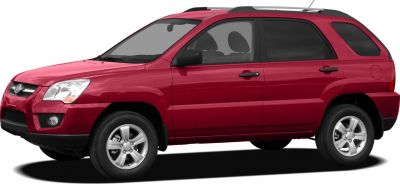
| Production: | 2008-2010 |
|---|---|
| Model Year: | 2008 |
| Length: | 4351 mm171.3 in |
| Width: | 1801 mm70.9 in |
| Height: | 1694 mm66.7 in |
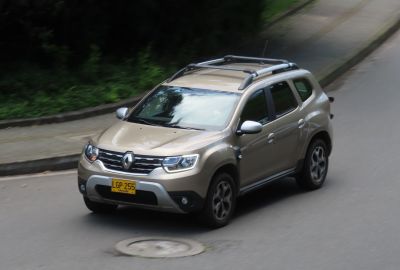
| Model Year: | 2021 |
|---|---|
| Length: | 4341 mm170.9 in |
| Width: | 2052 mm80.8 in |
| Height: | 1682-1693 mm66.2-66.7 in |

| Production: | 2020-2021 |
|---|---|
| Model Year: | 2020 |
| Length: | 4360 mm171.7 in |
| Width: | 1785 mm70.3 in |
| Height: | 1680 mm66.1 in |
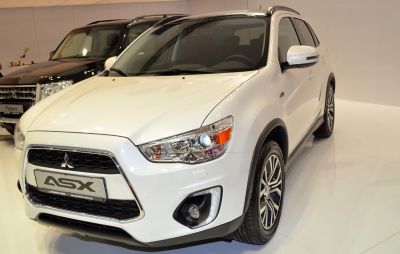
| Production: | 2012-2016 |
|---|---|
| Model Year: | 2012 |
| Length: | 4295 mm169.1 in |
| Width: | 1810 mm71.3 in |
| Height: | 1615-1625 mm63.6-64.0 in |

| Production: | 2022-2024 |
|---|---|
| Model Year: | 2023 |
| Length: | 4341 mm170.9 in |
| Width: | 2052 mm80.8 in |
| Height: | 1682-1693 mm66.2-66.7 in |
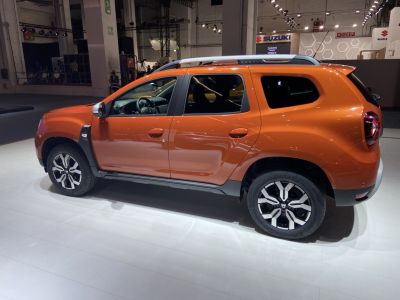
| Production: | 2021-2022 |
|---|---|
| Model Year: | 2022 |
| Length: | 4341 mm170.9 in |
| Width: | 2052 mm80.8 in |
| Height: | 1682-1693 mm66.2-66.7 in |
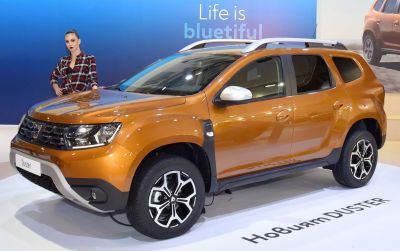
| Production: | 2019-2020 |
|---|---|
| Model Year: | 2018 |
| Length: | 4341 mm170.9 in |
| Width: | 2052 mm80.8 in |
| Height: | 1682-1693 mm66.2-66.7 in |
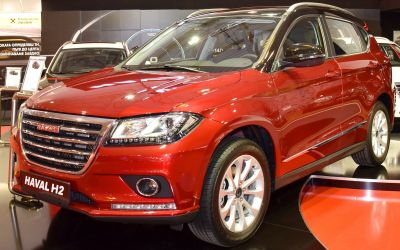
| Production: | 2015-present |
|---|---|
| Model Year: | 2015 |
| Length: | 4335 mm170.7 in |
| Width: | 1814 mm71.4 in |
| Height: | 1695 mm66.7 in |
